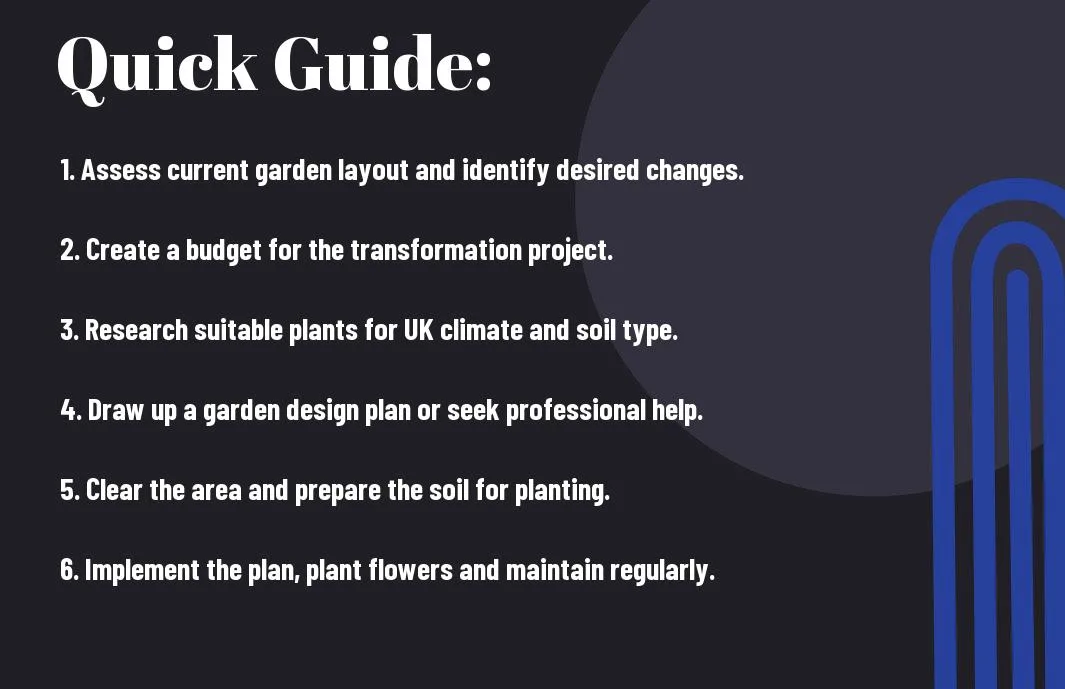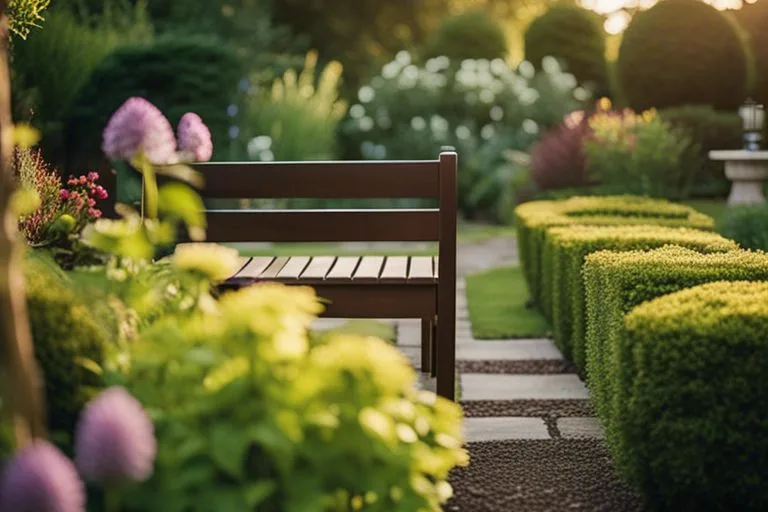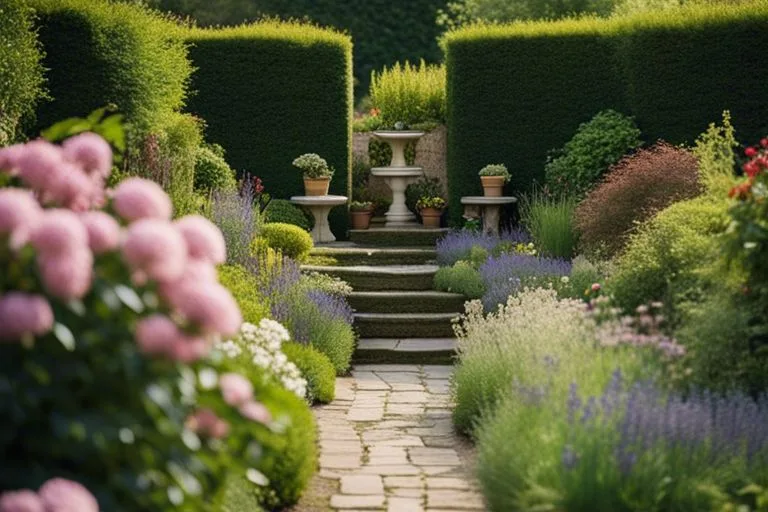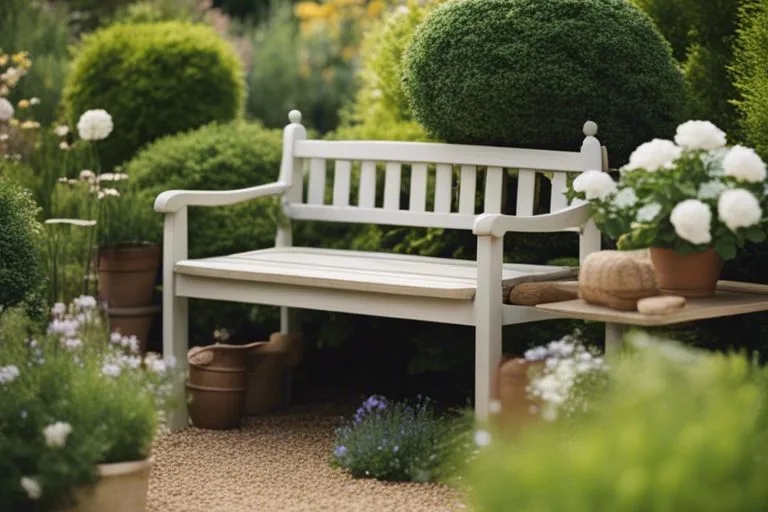Overwhelmed by the state of your garden and looking to give it a complete makeover? Transforming your UK garden doesn’t have to be a daunting task. With this step-by-step guide, you’ll learn how to revamp your outdoor space into a green oasis that suits your style and needs. From planning and designing to planting and maintenance, we’ve got you covered with expert tips and advice to help you achieve the garden of your dreams.
Understanding Your Garden
Assessing Your Garden’s Climate and Soil Type
For a successful garden transformation, it is necessary to first understand the climate and soil type of your outdoor space. Take note of the amount of sunlight the garden receives throughout the day, as this will influence the types of plants that will thrive in your garden. Additionally, consider the soil type – whether it is sandy, clayey, or loamy – as different plants have specific soil requirements.
Identifying Your Garden’s Unique Features and Challenges
If you are ready to transform your UK garden, it is crucial to identify the unique features and challenges that your garden presents. Take note of any existing structures, such as trees, shrubs, or hardscaping elements, that you would like to keep or work around. Additionally, assess any problem areas, such as poor drainage or areas of heavy shade, that may need special attention during the transformation process.
On further inspection, you may discover hidden gems in your garden that can be enhanced or repurposed in the transformation. By identifying both the unique features and challenges of your garden, you can create a plan that maximizes its potential while addressing any limitations.
Another
factor to consider when understanding your garden is the presence of wildlife and pests. Take note of any critters that frequent your garden, as well as any potential pest problems that may arise. By identifying these factors early on, you can implement strategies to coexist with wildlife or protect your plants from potential damage.
Choosing the Right Garden Type
Overview of Popular UK Garden Types (Modern, Traditional, Cottage, etc.)
Little can transform an outdoor space quite like selecting the right garden type. Whether you prefer a modern, traditional, cottage, or wildlife-friendly garden, each style can offer unique features and benefits that suit your preferences and lifestyle.
- Modern gardens often feature sleek lines, minimalist design, and contemporary materials.
- Traditional gardens showcase a classic English style with manicured lawns, colorful flower beds, and symmetrical layouts.
- Cottage gardens are known for their charming, informal designs with an abundance of flowers, herbs, and whimsical touches.
- Wildlife-friendly gardens focus on attracting birds, bees, and other beneficial insects through native plants and natural habitats.
- Recognizing your gardening style can help you create a cohesive and inviting outdoor space that reflects your personality and tastes.
Factors to Consider When Selecting a Garden Type (Space, Budget, Lifestyle)
For a successful garden transformation, consider factors such as the available space, budget constraints, and your lifestyle needs before selecting a garden type. Space availability will influence the size and layout of your garden, while your budget will determine the materials, plants, and features you can incorporate.
- Perceiving how much time you can dedicate to garden maintenance and your preferred outdoor activities will help you choose a garden type that is manageable and enjoyable for you.
Tips for Mixing and Matching Different Garden Styles
Type
With respect to mixing and matching different garden styles, the key is to find a harmonious balance between contrasting elements. You can combine modern and traditional features by incorporating sleek furniture into a classic garden design or adding traditional plants to a contemporary landscape for a unique blend of aesthetics.
- After carefully selecting the garden styles you want to mix, consider creating separate zones or areas within your garden to showcase each style effectively.
Essential Factors to Consider
Not sure where to start with your garden transformation? Consider these imperative factors to help guide your planning process.
Budgeting for Your Garden Transformation
- Factors such as materials, labor costs, and the size of your garden will all contribute to your budget.
- The key is to set a realistic budget from the outset to avoid any financial surprises down the line.
The overall cost of your project will depend on the scale of the transformation you envision. The more elaborate the design and features, the higher the cost is likely to be. The key is to strike a balance between your dream garden and what you can afford.
Considering the Purpose of Your Garden (Entertaining, Relaxation, etc.)
Your garden should reflect how you intend to use it. Are you looking to create a space for entertaining guests, a serene oasis for relaxation, or a play area for children?
Another important factor to consider is the maintenance level you are willing to commit to. If you prefer low maintenance, opt for easy-care plants and features that require minimal upkeep.
The Importance of Sustainability and Eco-Friendliness
Assuming an eco-friendly approach to your garden design can have numerous benefits for the environment and your wallet in the long run.
Plus, incorporating sustainable practices such as water conservation, composting, and using native plants can help attract wildlife and create a thriving ecosystem in your garden.
Step-by-Step Guide to Transforming Your Garden
With the desire to revamp your garden, it’s important to have a well-thought-out plan in place. Whether you’re a seasoned gardener or just starting out, referring to a Beginners guide to gardening can provide valuable insights. Below is a step-by-step guide to help you transform your garden into a beautiful and functional outdoor space.
Preparing Your Garden for Transformation (Clearing, Measuring, etc.)
| Clearing | Measuring |
With a clean slate in mind, start by clearing out any debris or overgrown vegetation. Trim back bushes and trees, remove weeds, and declutter the space. Next, measure your garden area to determine the available space for new features and plantings.
Designing Your Garden Layout (Paths, Patios, Plant Placement)
Your garden layout sets the foundation for the overall look and feel of the space. Consider the placement of paths for easy navigation, patios for relaxation and entertainment, and plants for visual appeal. Balance different elements to create a harmonious and inviting atmosphere.
When designing your garden layout, think about the practicality of the space. Ensure that pathways are wide enough for comfortable walking, patios have enough seating area, and plants are strategically placed to thrive in their designated spots.
Selecting the Right Plants, Flowers, and Trees for Your Garden
Your choice of plants, flowers, and trees can significantly impact the aesthetic appeal and functionality of your garden. Consider factors such as sunlight exposure, soil type, and maintenance requirements when selecting greenery for your outdoor space. Mix and match different varieties to create visual interest and ensure year-round beauty in your garden.
When selecting plants, flowers, and trees for your garden, think about the overall style you want to achieve. Whether you prefer a lush and tropical oasis or a minimalist and contemporary look, choosing the right greenery is key to bringing your garden design to life.
Installing Essential Features (Irrigation, Lighting, etc.)
The installation of important features such as irrigation systems, outdoor lighting, and seating areas can enhance the functionality and enjoyment of your garden. Irrigation systems ensure that your plants are adequately watered, lighting extends the use of your outdoor space into the evening, and comfortable seating areas provide opportunities for relaxation and socializing.
When installing important features in your garden, consider seeking professional assistance for complex tasks like irrigation system installation. Properly installed features not only elevate the aesthetic appeal of your garden but also contribute to its long-term maintenance and sustainability.
Tips and Tricks for a Successful Garden Transformation
After deciding to transform your UK garden, it’s important to have a clear plan in place to achieve the garden of your dreams. Here are some necessary tips and tricks to help you along the way:
Common Mistakes to Avoid When Transforming Your Garden
Garden transformations can be exciting, but they can also be overwhelming. To ensure your project goes smoothly, it’s necessary to avoid some common mistakes:
- Underestimating the time and effort required
- Not considering the long-term maintenance of new features
- Overlooking the importance of proper soil preparation
Recognizing and avoiding these pitfalls can help you achieve a successful and sustainable garden transformation.
DIY Projects to Enhance Your Garden’s Aesthetic and Functionality
With a bit of creativity and DIY spirit, you can enhance your garden’s beauty and functionality. Simple DIY projects such as building raised garden beds, installing a water feature, or creating a vertical garden can make a significant impact.
For instance, adding a pergola or a seating area can create a cozy outdoor space for relaxation and entertainment, while a compost bin can help reduce waste and improve soil health in your garden.
Hiring Professionals: When and How to Get Help
Your garden transformation project may benefit from the expertise of professionals, especially for tasks that require specific skills or equipment. Whether it’s for landscaping, tree removal, or garden design, hiring professionals can ensure a high-quality outcome.
Garden professionals can provide valuable insights, help you avoid costly mistakes, and bring your vision to life more efficiently. Before hiring, be sure to ask for references, check qualifications, and clearly communicate your expectations for the project.
Weighing the Pros and Cons of Different Garden Elements
Unlike traditional gardens, modern landscapes offer a wide range of elements to consider for your outdoor space. Understanding the pros and cons of each garden element can help you make informed decisions when redesigning or updating your garden. Below is a breakdown of some common garden features:
Pros and Cons of Different Garden Elements
| Pros | Cons |
| Artificial Turf | Requires minimal maintenance |
| Garden Ponds and Water Features | Adds a soothing ambiance |
| Outdoor Heating and Lighting | Extends the usability of the garden |
The Benefits and Drawbacks of Artificial Turf
Any homeowner considering artificial turf for their garden should weigh the pros and cons. Artificial turf requires minimal maintenance compared to natural grass, saving you time and effort on mowing, weeding, and watering. However, some may find that artificial turf lacks the authentic look and feel of real grass. For a comprehensive guide on designing a garden from scratch, follow these 17 steps.
The Advantages and Disadvantages of Garden Ponds and Water Features
Elements like garden ponds and water features can enhance the aesthetics of your outdoor space, providing a relaxing atmosphere and attracting wildlife. However, maintaining water features can be time-consuming and costly, requiring regular cleaning and upkeep. Understanding the balance between the benefits and drawbacks is crucial when deciding whether to include water elements in your garden design.
The Pros and Cons of Outdoor Heating and Lighting
Artificial lighting and heating can transform your garden into a cozy retreat, allowing you to enjoy outdoor spaces even in the cooler months or after sunset. However, the installation and running costs of outdoor lighting and heating systems can be significant. Consider the benefits of extended usability against the potential drawbacks to determine the right balance for your garden.
Pros and Cons of Outdoor Heating and Lighting
| Pros | Cons |
| Extends outdoor living space usability | Higher installation and running costs |
| Creates a cozy ambiance | Increased energy consumption |
Summing up
From above, it is clear that transforming your UK garden into a beautiful and functional space is an achievable goal with the right planning and execution. By following this step-by-step guide, you can create a garden that reflects your personal style while also considering the unique challenges and opportunities of the UK climate.
Remember to start with a clear vision, carefully consider your garden’s layout and design, and take the time to properly prepare the soil and choose the right plants for your area. With patience and dedication, you can create a garden that you will enjoy for years to come.




